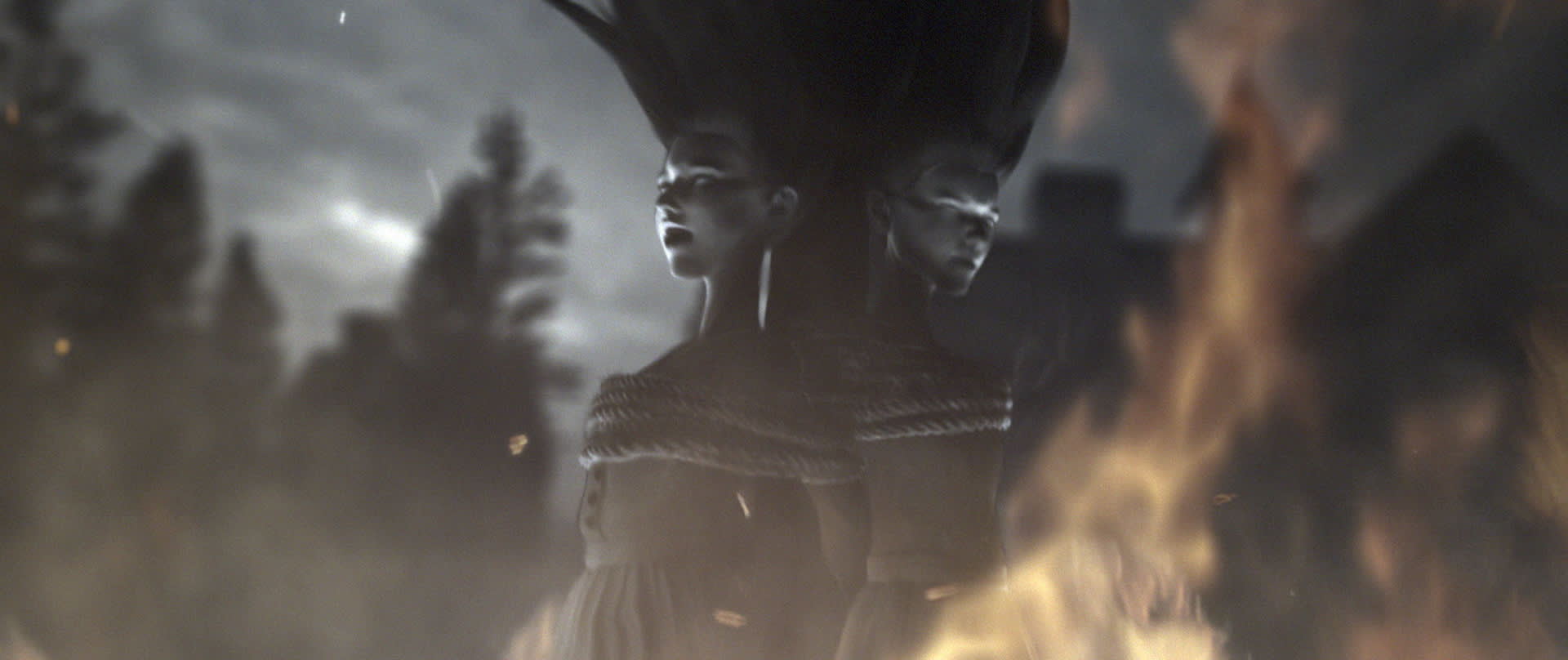From the first, however, it was clear that the New World was to be a harsher environment for witches and wizards than the Old World. There were three main reasons for this.
Firstly, like their No-Maj counterparts, they had come to a country with few amenities, except those they made themselves. Back home, they had only to visit the local Apothecary to find the necessities for potions: here, they had to forage among unfamiliar magical plants. There were no established wandmakers, and Ilvermorny School of Witchcraft and Wizardry, which would one day rank among the greatest magical establishments in the world, was at that time no more than a rough shack containing two teachers and two students.
Secondly, the actions of their fellow No-Majs made the non-magical population of most wizards’ homelands look lovable. Not only had conflict developed between the immigrants and the Native American population, which struck a blow at the unity of the magical community, their religious beliefs made them deeply intolerant of any trace of magic. The Puritans were happy to accuse each other of occult activity on the slenderest evidence, and New World witches and wizards were right to be extremely wary of them.
The last, and probably the most dangerous problem encountered by wizards newly arrived in North America were the Scourers. As the wizarding community in America was small, scattered and secretive, it had as yet no law enforcement mechanism of its own. This left a vacuum that was filled by an unscrupulous band of wizarding mercenaries of many foreign nationalities, who formed a much-feared and brutal taskforce committed to hunting down not only known criminals, but anyone who might be worth some gold. As time went on, the Scourers became increasingly corrupt. Far away from the jurisdiction of their native magical governments, many indulged a love of authority and cruelty unjustified by their mission. Such Scourers enjoyed bloodshed and torture, and even went so far as trafficking their fellow wizards. The numbers of Scourers multiplied across America in the late seventeenth century and there is evidence that they were not above passing off innocent No-Majs as wizards, to collect rewards from gullible non-magic members of the community.
The famous Salem Witch Trials of 1692-93 were a tragedy for the wizarding community. Wizarding historians agree that among the so-called Puritan judges were at least two known Scourers, who were paying off feuds that had developed while in America. A number of the dead were indeed witches, though utterly innocent of the crimes for which they had been arrested. Others were merely No-Majs who had the misfortune to be caught up in the general hysteria and bloodlust.
Salem was significant within the magical community for reasons far beyond the tragic loss of life. Its immediate effect was to cause many witches and wizards to flee America, and many more to decide against locating there. This led to interesting variations in the magical population of North America, compared to the populations of Europe, Asia and Africa. Up until the early decades of the twentieth century, there were fewer witches and wizards in the general American population than on the other four continents. Pure-blood families, who were well-informed through wizarding newspapers about the activities of both Puritans and Scourers, rarely left for America. This meant a far higher percentage of No-Maj-born witches and wizards in the New World than elsewhere. While these witches and wizards often went on to marry and found their own all-magical families, the pure-blood ideology that has dogged much of Europe’s magical history has gained far less traction in America.
Perhaps the most significant effect of Salem was the creation of the Magical Congress of the United States of America in 1693, pre-dating the No-Maj version by around a century. Known to all American witches and wizards by the abbreviation MACUSA (commonly pronounced as: Mah – cooz – ah), it was the first time that the North American wizarding community came together to create laws for themselves, effectively establishing a magical-world-within-a-No-Maj-world such as existed in most other countries. MACUSA’s first task was to put on trial the Scourers who had betrayed their own kind. Those convicted of murder, of wizard-trafficking, torture and all other manners of cruelty were executed for their crimes.
Several of the most notorious Scourers eluded justice. With international warrants out for their arrest, they vanished permanently into the No-Maj community. Some of them married No-Majs and founded families where magical children appear to have been winnowed out in favour of non-magical offspring, to maintain the Scourer’s cover. The vengeful Scourers, cast out from their people, passed on to their descendants an absolute conviction that magic was real, and the belief that witches and wizards ought to be exterminated wherever they were found.
American magical historian Theophilus Abbot has identified several such families, each with a deep belief in magic and a great hatred of it. It may be partly due to the anti-magic beliefs and activities of the descendants of Scourer families that North American No-Majs often seem harder to fool and hoodwink on the subject of magic than many other populations. This has had far-reaching repercussions on the way the American wizarding community is governed.



